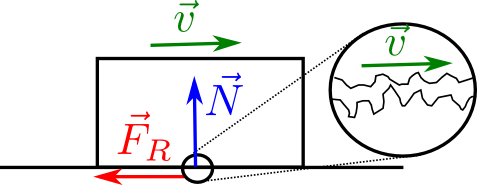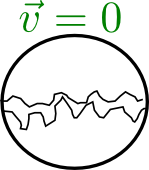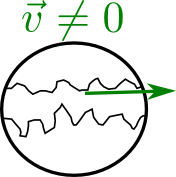Fuerzas de rozamiento¶

Fig. 71 A simple friction force has a constant modulus and points in the opposite direction of the velocity vector¶
Coeficientes de rozamiento¶

Fig. 72 In the dynamic regime, friction is produced by the irregularity on the surface of two objects that are moving against each other.¶

Fig. 73 In the static regime, friction is produced by the irregularity on the surface of two objects that are stationary with respect to each other.¶
Rozamiento dependiente de la velocidad¶

Fig. 74 For an object moving inside a fluid the friction (drag) depends on the velocity the object is moving as it must move more fluid the faster it goes.¶
Magnitudes escalares¶
I am writing an equation inline \(x=-i\hbar\psi=\hat{h}\psi\).
If the equation is by itself,
I am going to add a figure

Fig. 75 Here is my figure caption!¶
:::{admonition,warning} This is also Markdown This text is standard Markdown :::
:::{admonition,note} This is also Markdown This text is standard Markdown :::
:::{admonition,tip} This is also Markdown This text is standard Markdown :::
Magnitudes vectoriales¶
There are many ways to write content in Jupyter Book. This short section covers a few tips for how to do so.
I am going to cite a reference [HdHPK14]
Now I am going to cite section escalares Sec. Magnitudes escalares
The Schrödinger equation is Eq. (195)
I am citing the figure: Fig. 102
Unidades¶
Problemas y ejemplos resueltos¶
This is the text of a problem
I can start solving like this
Some text needs to go between sidebars
And at the end
This is the text of another problem
